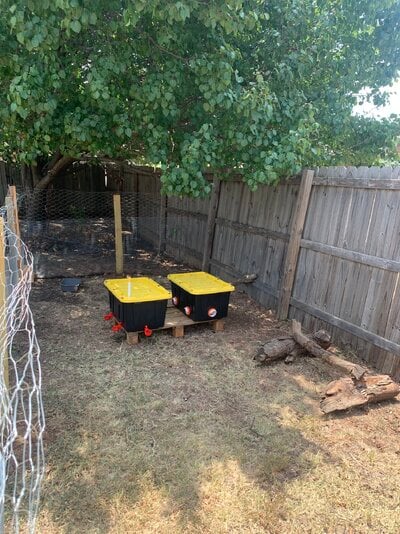How much room do you have in the run and coop? With mine I find that they form two separate flocks until the pullets start laying. If they invade the personal space of the older hens they are likely to get pecked so they quickly learn to avoid the older ones. It doesn't matter if they are 3 weeks old or 16 weeks old, mine do not stand up to the older hens until they around when they start laying. Then they have matured enough to force their way into the pecking order.Should I merge them now or later?
They need enough room to avoid the older hens both in the run during the day and at night in the coop. There are techniques to integrate them even when room is tighter but how much room you have has a lot to do with how you go about it.
To me, integrate does not mean they are cuddling up to each other and merged into one big happy group. It means that the older are not injuring the younger. They can come together and sing Cum-ba-la after they younger mature.
My pullets do not sleep on the same roosts as the adults until they mature. They sleep somewhere else. That may be on the coop floor or on something else in the coop. I personally don't care where mine sleep as long as it is not in the nests and is predator safe.
If you wait until they are mature to integrated them they tend to settle their pecking order issues fairly quickly. This can involveWhat is the advantage of merging them sooner rather than later?
fighting. So it is usually over with quicky.
The sooner you get them sleeping in the same coop then you have one less coop to keep clean and maintain. You still need multiple food and water stations so the younger can eat and drink without being bullied.
The pullets tend to watch the older hens to see where to lay, even if they are sleeping in a second coop. But your odds of them laying in your real nests is higher if they are sleeping in there.
I can't tell when the pullets are ready to take the next step in their relations with the adults, whether they are sleeping in the same building or not. So I like leaving it up to them to decide when they want to take the next steps in merging with the main flock. Each flock is different, sometimes one group merges a lot younger than another.
I have two different ways. My brooder is in the main coop so the chicks grow up with the flock. At five weeks I open the brooder door and walk away after the adults are outside for the day. I have a lot of room in the coop and outside, I've never had a problem with this. But you did not raise yours in the coop.How do you mix them when there are this age?
When the main coop is getting crowded and they are about 5 weeks old I move them from the brooder inn the main coop to the grow-out coop. I leave them in the grow-out coop and run (across wire from the main run) until they are about 8 weeks old. By then they know to sleep in the grow-out coop. Then I let them out to roam with the adults.
Then after they have proven they can stay in the run (over 2,000 square feet) with the adults without getting injured I move them into the main coop at night if they haven't already moved in. Usually around 12 weeks of age.
Go slow. Try to not lock them in enclosed spaces where space is tight so they have room to run away and stay away. Observe as much as you reasonably can. You don't get guarantees about any of this, there is risk. Just do the best you can.How can I avoid anyone getting hurt?
As others have said, feed them all an appropriate feed for the chicks and offer oyster shell on the side. The ones that need the calcium for the eggshells should eat enough, the others should not eat enough oyster shell to harm themselves.How can I ensure the chicks get their chick food and the hens get their hens food?
Good luck! Many of us go through this regularly. You can have problems but it can also go very well.









